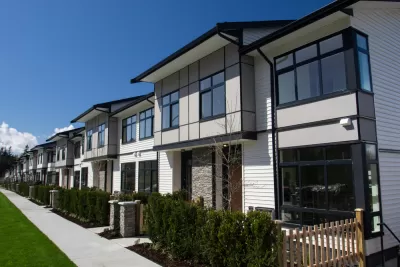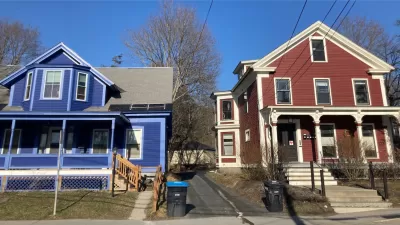For upzoning efforts to result in a significant rise in new housing units, cities and states must do more than just change zoning codes to ensure missing middle housing is easy and affordable to build.

A new paper from David Garcia, Muhammad Alameldin, Ben Metcalf, and William Fulton outlines the barriers to building more ‘missing middle housing’ and the benefits of encouraging more construction of this housing type.
Although many cities and states are moving to legalize mid-density buildings, these zoning changes may not be sufficient to result in a large number of new housing units. Design and utility requirements, impact fees, and other factors also have a significant impact on how many new homes will be created.
The paper examines the history of missing middle housing in the United States and the benefits of this type of development, describes findings from two roundtable discussions with developers, and provides several recommendations for addressing challenges.
The authors’ recommendations include: states should assess other development code changes that can spur missing middle development; cities should examine their land use regulations to ensure building codes don’t impede missing middle production; and cities should consider going above and beyond state regulations to encourage more housing production. Ultimately, “parallel policy changes” are needed alongside zoning reform if reform efforts are to provide a real path to boosting housing affordability.
FULL STORY: Unlocking the Potential of Missing Middle Housing

Alabama: Trump Terminates Settlements for Black Communities Harmed By Raw Sewage
Trump deemed the landmark civil rights agreement “illegal DEI and environmental justice policy.”

Planetizen Federal Action Tracker
A weekly monitor of how Trump’s orders and actions are impacting planners and planning in America.

The 120 Year Old Tiny Home Villages That Sheltered San Francisco’s Earthquake Refugees
More than a century ago, San Francisco mobilized to house thousands of residents displaced by the 1906 earthquake. Could their strategy offer a model for the present?

In Both Crashes and Crime, Public Transportation is Far Safer than Driving
Contrary to popular assumptions, public transportation has far lower crash and crime rates than automobile travel. For safer communities, improve and encourage transit travel.

Report: Zoning Reforms Should Complement Nashville’s Ambitious Transit Plan
Without reform, restrictive zoning codes will limit the impact of the city’s planned transit expansion and could exclude some of the residents who depend on transit the most.

Judge Orders Release of Frozen IRA, IIJA Funding
The decision is a victory for environmental groups who charged that freezing funds for critical infrastructure and disaster response programs caused “real and irreparable harm” to communities.
Urban Design for Planners 1: Software Tools
This six-course series explores essential urban design concepts using open source software and equips planners with the tools they need to participate fully in the urban design process.
Planning for Universal Design
Learn the tools for implementing Universal Design in planning regulations.
Clanton & Associates, Inc.
Jessamine County Fiscal Court
Institute for Housing and Urban Development Studies (IHS)
City of Grandview
Harvard GSD Executive Education
Toledo-Lucas County Plan Commissions
Salt Lake City
NYU Wagner Graduate School of Public Service





























